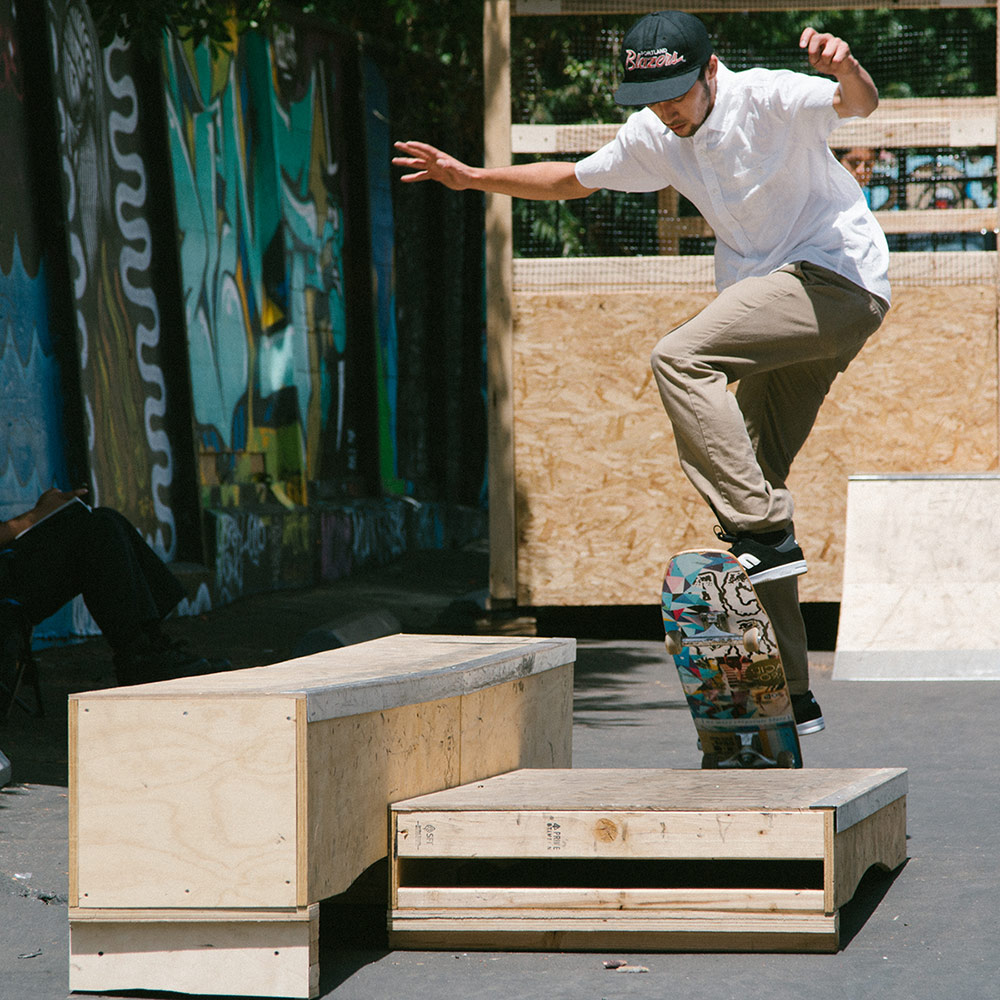Disposable: The History of Skateboard Art

For many skateboard artists the pavement is their only audience. In 2004 renowned skater Sean Cliver attempted to change this with the launch of his book Disposable: The History of Skateboard Art, a 228-page full color text showcasing 1000 of the best skateboard artworks from the last three decades. While local skate stores picked up the text, Cliver found his message wasn't really getting out to the public. This year (thanks largely to a new distributor deal with Ginkgo Press) Cliver has re-launched the book in hopes of granting this art medium exposure. We caught up with Cliver to chat about art snobbery, skateboarding and devil-worshipping. (Contact Gingko for ordering info.)
Is this your first book?
I've had one other book published prior to Disposable: A History of Skateboard Art and that was theJackass: The Movie Official Companion book (I'd worked as a co-producer/photographer on the film). Actually, that was one of the main things that gave me the false impression I'd have a much easier time getting a second book published, like it gave me clout or something as an author. Guess I kept forgetting what the subject material was in most peoples' eyes—pop culture crap. (Click image at left for detail.)
Do you believe skateboard decoration is a true art form?
What's that age old question, is it art? Yeah, sure. Why not? There's a lot of other stuff whipped out through the decades and centuries that is equally debatable, but has still wound up in collections, galleries, and museums throughout the world. The only downside is it'll probably all get lumped into the pop-culture waste paper basket, or worse that whole urban guerrilla thing. To tell you the truth, though, I could care less about trying to justify it as an art form. That whole art philosophy thing is for the birds. In fact that is one of the main reasons I did this book: I wanted to portray the art and history as it was and is, not as some random outsider went and theorized.
What's the best thing you've ever seen on a deck?
The first time I can remember being truly surprised by something on a deck was in 1990 when the World Industries Randy Colvin Censorship model came out with a graphic featuring full-frontal female nudity, like with the legs spread and everything. Up until that point graphics had always toed a line, never really crossed over into out-and-out shock value, but this one did away with that. The fact that it came in a sealed black bag was also pretty cool. But then a year later the 101 Natas Kaupas Devil Worship board came out and really threw everyone and their silly religious superstitions for a loop. Yeah, graphics had looked mildly evil and all in the past with the skulls and daggers and shit, but no one at all was prepared for decapitated babies and nude popes strung up on an inverted cross behind the Devil Himself. Since then there's been arguably worse graphics, but these were the true pioneers. (Click image at right for detail.)
Who was involved and how did you get them interested in contributing?
For more images and to continue reading…
Fortunately I was able to get most all of the influential artists throughout the last three decades to contribute portions of their history in story form. A few of the more prominent ones included, Jim Phillips Sr., Pushead, John Lucero, Ed Templeton, Wes Humpston, Andy Howell, Marc McKee and Chris Miller. A few were skeptical upon first contact, but it certainly helped that I had a history in skate art as well, not to mention that I was able to track down most all of their old boards to include in photo form.
How did you fund the production of the book?
Luckily I didn't have to fund shit, otherwise this would still just be a bunch of files taking up space on my hard drive. I actually did have a hard time shopping the book around, though. The handful of "real" publishers I'd sent the proposal to passed on it. I guess after looking into previous sales in the skateboard niche they quickly lost interest. Well, that and I wanted to retain total creative control over the book with no outside interference. So I sat and cried and whined for a bit until a novice publisher in the skateboard world, Concrete Wave Editions, managed to facilitate a joint venture with another company in the skateboard industry, Blitz Distribution. So it was all grassroots. Next best thing to self-publishing. But the book came out exactly how I wanted it—design/content-wise, I should stipulate, as there were some printer/production issues I had to suck it up on—and it went on to sell almost 15,000 copies before I had to search out a new publisher that was better suited to worldwide book distribution.












